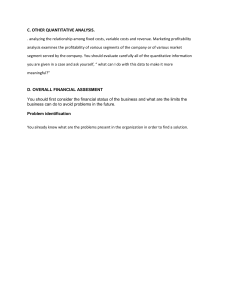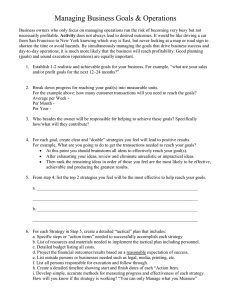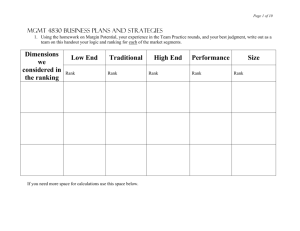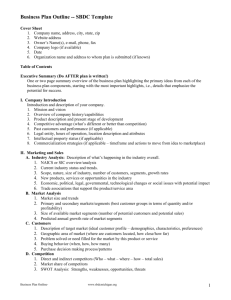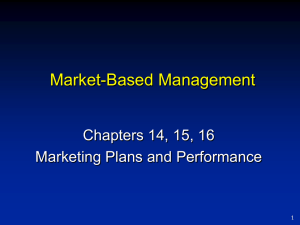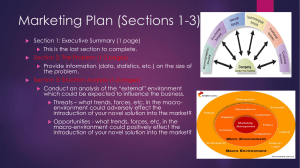Developing a Strategic Marketing Plan
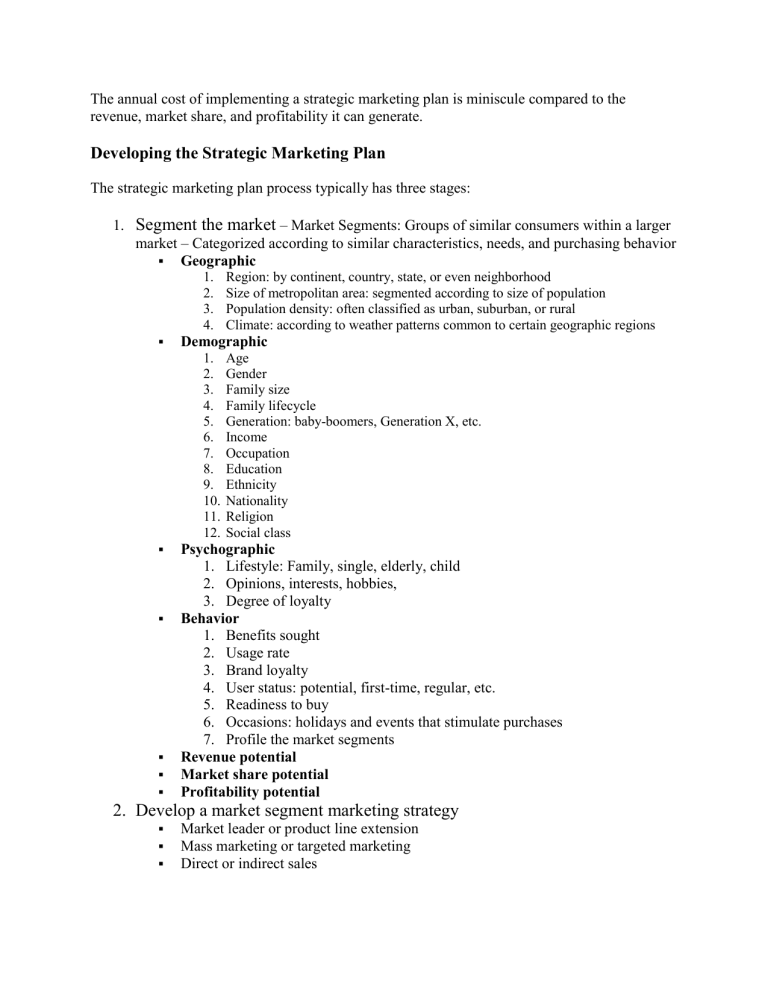
The annual cost of implementing a strategic marketing plan is miniscule compared to the revenue, market share, and profitability it can generate.
Developing the Strategic Marketing Plan
The strategic marketing plan process typically has three stages:
1.
Segment the market
– Market Segments: Groups of similar consumers within a larger market – Categorized according to similar characteristics, needs, and purchasing behavior
Geographic
1.
Region: by continent, country, state, or even neighborhood
2.
Size of metropolitan area: segmented according to size of population
3.
Population density: often classified as urban, suburban, or rural
4.
Climate: according to weather patterns common to certain geographic regions
Demographic
1.
Age
2.
Gender
3.
Family size
4.
Family lifecycle
5.
Generation: baby-boomers, Generation X, etc.
6.
Income
7.
Occupation
8.
Education
9.
Ethnicity
10.
Nationality
11.
Religion
12.
Social class
Psychographic
1.
Lifestyle: Family, single, elderly, child
2.
Opinions, interests, hobbies,
3.
Degree of loyalty
Behavior
1.
Benefits sought
2.
Usage rate
3.
Brand loyalty
4.
User status: potential, first-time, regular, etc.
5.
Readiness to buy
6.
Occasions: holidays and events that stimulate purchases
7.
Profile the market segments
Revenue potential
Market share potential
Profitability potential
2.
Develop a market segment marketing strategy
Market leader or product line extension
Mass marketing or targeted marketing
Direct or indirect sales
After analyzing market segments, customer interests, and the purchase process, it's time to create the strategic marketing plan. The strategic marketing plan document usually includes:
Situational Analysis - Where is the company now? a.
Market Characteristics b.
Key Success Factors c.
Competition and Product Comparisons d.
Technology Considerations e.
Legal Environment f.
Social Environment g.
Problems and Opportunities
Marketing Objectives - Where does management want the company to go? a.
Product Profile b.
Target Market c.
Target Volume in Dollars and/or Units
Marketing Strategies - What should the company do to achieve its objectives? a.
Product Strategy b.
Pricing Strategy c.
Promotion Strategy d.
Distribution Strategy e.
Marketing Strategy Projection
How to Use a Strategic Marketing Plan
Once a company's executive team has approved the strategic marketing plan it's time to take the next step -- create the tactical marketing programs and projects needed to implement the plan.
These tactical programs usually include:
Product Development Plan
Marketing Communications Plan
Sales Development Plan
Customer Service Plan
Benefiting from a Strategic Marketing Plan
The top-down process of developing a strategic marketing plan helps insure that all tactical marketing programs support the company's goals and objectives, as well as convey a consistent message to customers.
This approach improves company efficiency in all areas, which helps improve revenue and market share growth, and minimizes expenses -- all of which lead to higher profitability.
Marketing Strategy Tasks:
Research customer attitudes toward your company, your product category, and your competition.
Evaluate the attractiveness of potential target markets
Determine the competitive strengths and weaknesses of your company and your competitors
Develop marketing communications and sales development strategies for each target market
Design the metrics to measure performance
Sources: http://www.allen.com/cgi-bin/gt/tpl.h,content=125
